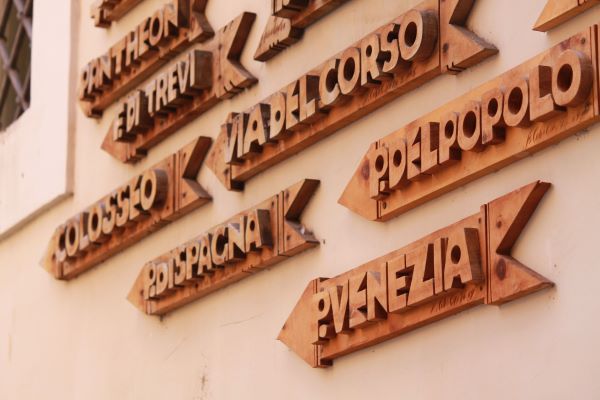


Rome is a big city full of interesting places to see and explore, from historic landmarks like the Colosseum to famous museums, archaeological sites, and neighborhoods. It’s important to know how to navigate the city streets if you want to get where you need to go.
Romans use many different forms of public transportation to get around. Most of Rome’s public transportation is run by the company ATAC, which simplifies matters when it comes to buying tickets: the same tickets are used for buses, trams, and the subway.
Make Sure You Buy the Right Pass during Your Study Abroad Program at JCU
As any major metropolis, Rome offers a variety of options to fit your transportation needs, whether you need a one-trip ticket, an annual pass, or something in between.
If you only need to catch the bus, tram, or subway, your best option is the BIT, also called an Integrated Time Ticket. A BIT costs €1.50 and lasts 100 minutes after you validate it. You can use it on multiple forms of public transport within the 100 minutes, but only one subway ride is included. The easiest way to buy your ticket is by finding the closest metro station, a newsstand or tabacchaio, or vending machines along the main bus lines. Since it will probably be more cost-effective to get a pass with a longer duration while you study abroad, depending how often you use public transport, you can choose from various passes that range from 24 hours to a week, and even a month or a year.
 Your ticket gives you access to Rome’s public transportation, from buses to trams to subway
Your ticket gives you access to Rome’s public transportation, from buses to trams to subway
It's important to remember that you have to validate your ticket when you board. If you have a pass, you only need to validate it the first time you use it. However, since the metro system has turnstiles, you will need to scan your pass each time you enter. You could get a fine if you are carrying a ticket that has not been validated, or that has expired.
Students can Hop on the Metro to See Many of Rome’s Famous Sites
One of the great aspects of Rome’s metro system is its size—covering 37.3 miles in all, with three different lines, it’s actually one of the smallest systems in Europe, which makes it easy to use and navigate.
The metro system in Rome is separated into three different lines: Line A (orange), Line B (blue), and Line C (green). The Line C is relatively new and it's still under construction in some parts, so it doesn't yet connect to the other lines. However, the portion that is open is accessible and very useful.
Essentially, the metro is shaped like a giant X. Line A runs from northwest to southeast from Battistini to Anagnina, and includes stops close to famous sites you’ll want to see while you study abroad Italy, including the Vatican, St. Peter’s Square, the Spanish Steps, and the Trevi Fountain. Line B travels from the northeast to the south of Rome between Rebibbia and Laurentina, and you can use it to reach the Colosseo station near the Colosseum and Circus Maximus. Both lines intersect at Termini station, where you can catch trains to the rest of Italy. Line C services 22 stops between Pantano and San Giovanni when using Line C, you can reach Porta Maggiore, a city wall from the 3rd century, and Centocelle Park. Plans for a fourth line are still underway, but progress is slow, mainly because every time a new tunnel is built construction must stop when archaeological remains are found.
 Students can use the tram or bus to visit famous sites like Piazza Venezia
Students can use the tram or bus to visit famous sites like Piazza Venezia
Do you want to study abroad at an American university in Rome?
Contact JCU for more information about our program!




